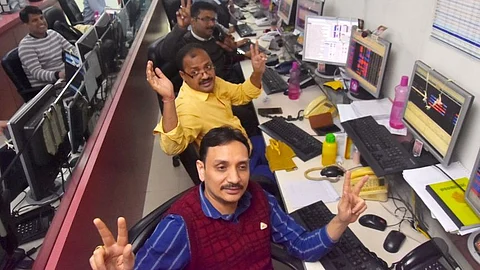
- Home
- About
- Globally Speaking
- Videos
- Podcast
- Geopolitics
- Industry
- SIGN UP

Companies are hiring once again, car sales are zooming in the fast lane, many sectors are back at near full capacity and corporate profits are rising. These augur well for the country and seem to bear out forecasts of steroid-charged growth rates in the coming fiscal.
The green shoots of growth seen in the Indian economy seem to be sustaining and spreading to more sectors. Jobs, corporate results, demand for steel and several important moving indicators all support this prognosis.
Job market looking up
The biggest thumbs up for the Modi government’s handling of the Covid-hit economy comes from the job market. As the country inches towards the 100 million vaccination mark, becoming, in all likelihood, the first country to reach that milestone, the cautiously upbeat mood is being reflected in optimistic employment figures.
According to staffing solutions company Xpheno’s Active Jobs Outlook Survey showed a 50 per cent increase in total job openings in January to 265,000. The corresponding figure for December 2020 was 180,000.
Have you read?
Tech hiring in droves
India’s once-again booming technology sector was the main contributor to this surge. It accounted for 78 per cent of the total.
IT major Infosys alone is looking at hiring 30,000-odd people in the current fiscal. Next year, it expects to recruit 24,000 techies straight from various campuses.
In another indication that the uptick in demand is sustaining, the Society of Indian Automobile Manufacturers (SIAM), the apex body of India’s massive automobile sector, reported a growth of 13.59 per cent in passenger vehicles in December 2020 compared to the figure for the previous corresponding year.
Of this, passenger car sales rose 8.36 per cent, utility vehicles 19.75 per cent and vans 41.06 per cent. Three-wheeler sales, however, fell sharply by 58.87 per cent over this period, but two wheelers registered a relatively small sales growth of 7.42 per cent.
Similar trends are visible in other important sectors of the economy, such as steel, power and fast moving consumer goods (FMCG), among several others. All of these are considered proxies for the larger economy and growth in recent months augurs well for the Indian corporate sector and the overall economy.
Xpheno’s Active Jobs Outlook Survey showed a 50 per cent increase in total job openings in January to 265,000. The corresponding figure for December 2020 was 180,000.
This is corroborated by an ET Intelligence Group study of a sample of 3.087 companies, which reported a 68.7 per cent growth in net profit in the December quarter. This is the strongest growth in profits in nine quarters and is being attributed mainly to cost control.
Revenues, on the other hand, expanded by only 1.8 per cent. But this was still significant as revenues showed a growth after three quarters. The small growth was mainly because the overall revenue figures for the sample was pulled down by a 16 per cent contraction in sales of the oil and gas sector. The share of this sector in the sample’s revenues and sales was 18.6 per cent and 13.5 per cent, respectively.
If this sector is excluded from the sample, then the net profits of the remaining companies show a healthy revenue growth of 7.1 per cent. Profit growth, in that case, would have been an even faster 74.2 per cent.
SIAM reported a growth of 13.59 per cent in passenger vehicles in December 2020 compared to the figure for the previous corresponding year.
Many companies used the rise in profits and cash flows to reduce their debts and strengthen their balance sheets. Companies like Tata Steel, Ultratech, JSPL and Hindalco, among others, now have much lower levels of debt than they did a year ago. This will get reflected in better margins in future.
Aditi Nayar, Principal Economist at rating agency ICRA, told the media house: “In our view, the recession has ended in the last quarter.”
Meanwhile, Japanese brokerage Nomura’s India Business Resumption Index (NIBRI), which tracks normalcy in the economy, was at 98.1 for the fortnight ended February 14. A reading of 100 signals full recovery and given the trend of the last few fortnights, it may well touch that figure in the ongoing fortnight.
“The continued recovery in NIBRI is strongly predicated on the containment of the pandemic. Beyond this, we remain upbeat on the growth prospects due to the confluence of fiscal activism, the lagged effects of easy financial conditions, base effects and faster global growth,” a note from Nomura said.
An ET Intelligence Group study of 3.087 companies showed a 68.7 per cent growth in net profit in the December quarter. This is the strongest growth in profits in nine quarters.
Reflecting this overall improvement in the Indian economy, a report by India Ratings and Research says the states are likely to have an aggregate fiscal deficit of 4.3 per cent in the coming fiscal compared to 4.6 per cent in the current financial year.
That will be good news for macro hawks and also for the bond markets and should sustain a downward pressure on interest rates. Given the slew of positive tidings coming in from diverse sectors, India Ratings has projected a nominal GDP growth of 14.5 per cent in 2021-22, making it the latest to forecast double digit growth, which is expected to make India the fastest growing major economy in the world once again.